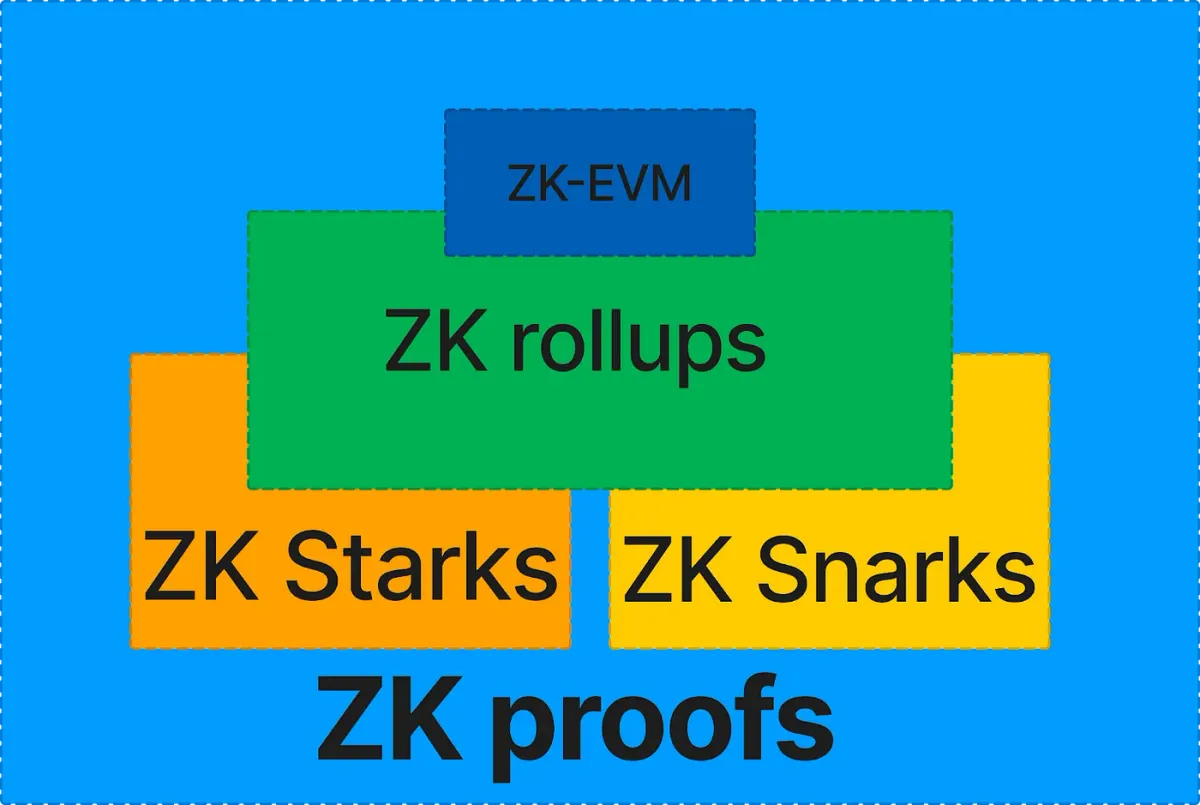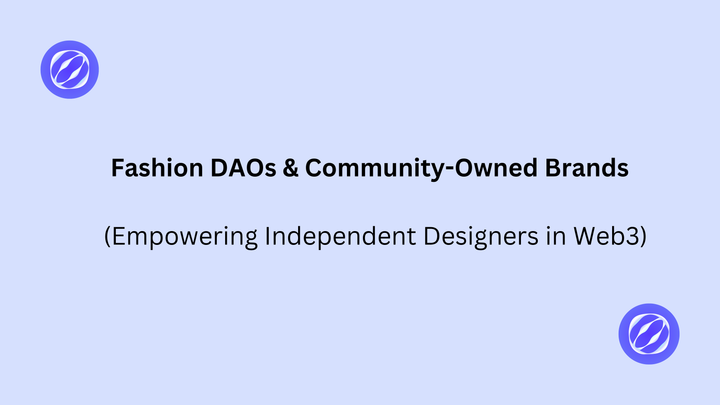How Zero-Knowledge Proofs Are Transforming Web3 (ZK-Rollups, ZK-EVM, etc.)

Blockchain technology has always faced a trilemma: how to be decentralized, secure, and scalable all at once. Zero-knowledge proofs (ZK proofs) are a breakthrough cryptographic technique that is helping to address this challenge in the Web3 world. In simple terms, a zero-knowledge proof lets someone prove a statement is true without revealing the underlying information. This seemingly magical property is now being harnessed in blockchain applications to boost scalability (through ZK-rollups and ZK-EVMs) and to enhance privacy. In this article, we’ll explain how ZK-rollups differ from the earlier Optimistic Rollups, review major projects using ZK tech (like Polygon zkEVM, zkSync, and StarkNet), and explore practical Web3 use cases in decentralized finance (DeFi) and gaming (GameFi) enabled by zero-knowledge proofs.
ZK-Rollups vs. Optimistic Rollups: What’s the Difference?
Layer-2 scaling solutions have emerged to help Ethereum and other blockchains process more transactions at lower cost. Two main types of rollups are leading the charge: Optimistic Rollups and Zero-Knowledge Rollups (ZK-rollups). Both move transactions off the main chain (Layer 1) to reduce congestion, but they differ in how they guarantee those transactions are valid:
- Optimistic Rollups operate under an assumption of innocence: they “optimistically” assume that off-chain transactions are valid and post them to the main chain without immediate verification. However, these rollups have a built-in dispute period (often about 1 week) during which anyone can challenge a batch if they spot an invalid transaction. In case of a challenge, a fraud proof is executed: the disputed transaction is re-run on Layer 1 to check who’s lying. This mechanism means optimistic rollups require a waiting period for withdrawing funds back to Layer 1 (to allow time for challenges to be raised). If no fraud is detected in the dispute window, the batch of transactions is finalized on Ethereum. This design is simpler and was quicker to implement – solutions like Arbitrum and Optimism are based on optimistic rollups.
- ZK-Rollups take the opposite approach to validation. Instead of assuming transactions are fine and waiting for someone to prove otherwise, ZK-rollups prove everything up front. When a batch of off-chain transactions is ready, the rollup operators generate a zero-knowledge proof (often a succinct cryptographic proof called a SNARK or STARK) that mathematically attests to the validity of every transaction in the batch. This proof – sometimes called a validity proof – is then submitted to the main chain, where it is quickly verified. If the proof checks out, the blockchain knows the transactions in the batch were all valid, with no need to trust the rollup operator. In effect, ZK-rollups assume transactions are invalid until proven valid. Because of this, there’s no lengthy waiting period for withdrawals; finality is achieved as soon as the proof is accepted on the main chain. ZK-rollups offer strong security (no one can cheat, since an invalid batch won’t have a valid proof) and faster finality, but the technology and math behind them are more complex.
To put it succinctly: Optimistic rollups trust then verify (if challenged), while ZK-rollups verify everything upfront. Each approach has pros and cons. Optimistic rollups, by not doing heavy computations up front, can bundle transactions with less overhead – which historically meant lower costs and earlier deployment. But they rely on game theory and honest watchers to catch fraud, and they make users wait to be sure their funds are safe to withdraw. ZK-rollups have the elegance of immediate cryptographic certainty (no need to trust watchers or wait days), and they also inherently provide some privacy (the proof doesn’t reveal all transaction details, just that each transaction was valid). However, generating ZK proofs used to be computationally intensive and tricky to implement for arbitrary smart contract logic.
The landscape is now changing rapidly. Advances in zero-knowledge algorithms and circuits have reduced the cost and time to generate proofs. As a result, ZK-rollups are becoming viable for general-purpose use, not just simple token transfers. This leads us to the major projects pioneering ZK tech in Web3.
Major ZK Projects: Polygon zkEVM, zkSync, StarkNet
Several prominent teams have built ZK-based scaling solutions that are live or in advanced development. Each takes a slightly different approach:
- Polygon zkEVM: Polygon (known for its Ethereum sidechain) invested heavily in zero-knowledge R&D and unveiled Polygon zkEVM, which stands for zero-knowledge Ethereum Virtual Machine. The goal of zkEVM is to make a Layer-2 rollup that is fully Ethereum-compatible (so developers can deploy the same smart contracts and code as on Ethereum mainnet) but secured by ZK proofs. Polygon’s zkEVM launched its mainnet beta in March 2023, touted as the first fully EVM-equivalent ZK-rollup to reach mainnet. It can process transactions and then generate validity proofs that those transactions followed Ethereum’s rules. For users, using zkEVM feels like using Ethereum, but transactions are faster and fees are much lower (since the computation is done off-chain and only a proof is submitted on-chain). Polygon zkEVM represents a big step because it proved that complex smart contracts (not just simple transfers) could run inside a ZK-rollup environment.
- zkSync: zkSync is a project by Matter Labs and was one of the earliest live ZK-rollups for payments (their initial version, zkSync 1.0, handled simple token transfers and swaps). In 2023, Matter Labs launched zkSync Era, a second-generation ZK-rollup that supports smart contracts. zkSync Era uses a ZK-proof system that is EVM-compatible (not perfectly identical to Ethereum’s VM, but very close – it supports Solidity and Vyper with only minor changes). They introduced features like account abstraction and other user experience improvements alongside the ZK tech. The key idea of zkSync is to scale Ethereum by offloading transactions to Layer 2 and proving them with ZK-SNARKs. Many dApps, from decentralized exchanges to NFT projects, have deployed on zkSync Era since its launch, attracted by low fees and the security inheritance from Ethereum (every batch comes with a validity proof checked on Ethereum). zkSync’s ecosystem is growing quickly, and users can bridge assets to zkSync to enjoy near-instant, low-cost transfers and trades.
- StarkNet: StarkNet is a ZK-rollup platform developed by StarkWare, the team behind some early ZK-based solutions like dYdX (a derivatives exchange on a StarkWare system) and Immutable X (an NFT platform using ZK proofs). StarkNet takes a distinct approach: it uses a custom programming language called Cairo instead of Solidity, meaning it’s not EVM-compatible by default. Developers write contracts in Cairo to run on StarkNet. This was done because Cairo is designed to be highly efficient for generating STARK proofs (STARKs are a type of zero-knowledge proof that don’t require a trusted setup and are StarkWare’s specialty). StarkNet is currently in an alpha phase on mainnet, but its goal is to enable any kind of dApp to run with ZK security. Because of its different language, there’s a learning curve for developers, but it potentially offers great throughput. StarkWare’s tech has already proven itself in specialized use cases: for example, Immutable X used StarkWare’s ZK system to facilitate thousands of NFT trades with near-zero fees, with transactions rolled up and a proof periodically posted to Ethereum to ensure correctness. StarkNet is making that kind of capability general-purpose. It also envisions Layer 3 networks in the future – meaning one could build even another layer on top of StarkNet (say, a game-specific chain that then rolls up into StarkNet, which in turn rolls up into Ethereum), all leveraging ZK proofs for security at each layer.
Aside from these three, there are other notable efforts: Scroll is another zkEVM project in development; Loopring has a live ZK-rollup focusing on trading and payments; Aztec Network (before pivoting in 2023) used ZK-SNARKs to enable private DeFi transactions on Ethereum; and Mina Protocol uses ZKPs to maintain a tiny, constant-sized blockchain. The common thread is that zero-knowledge technology is advancing from a theoretical concept to practical infrastructure across the crypto space.
Use Cases Enabled by ZK in DeFi and GameFi
Zero-knowledge proofs unlock several exciting possibilities in Web3:
Privacy-Preserving DeFi
In decentralized finance (DeFi), ZK proofs can bring privacy without sacrificing security. Blockchains like Ethereum are public ledgers – which means if you do a transaction, anyone can see the details (addresses, amounts, etc.). ZK tech allows for private transactions or verifications. This means transactions where details like amounts or participant identities can be kept hidden from the public, even while the network verifies their validity. For example, a protocol could use ZK-SNARKs to let users prove they have enough collateral for a loan without revealing exactly who they are or how much they have.
Projects like Aztec have created “shielded” versions of tokens (e.g., zkDAI, zkETH) where the amounts are hidden on Ethereum – a user could transfer value or interact with a DeFi protocol and only a proof (that the transaction is valid and follows all rules) would be published, not the details. This is analogous to how Zcash enables private crypto transactions using zk-SNARKs.
Another arena is compliance in DeFi. Imagine a decentralized exchange that by law shouldn’t serve certain regions. Users could prove “I am not a resident of Country X” via a zero-knowledge proof (perhaps by proving they have an ID from another country, without revealing which country or the ID details). This kind of selective disclosure could let DeFi protocols follow regulations without collecting excessive personal data – users keep their privacy, only proving the necessary attribute. It’s like showing a bouncer a secret stamp that proves you’re over 21, without showing an ID card.
ZK-rollups themselves already improve DeFi by lowering costs and increasing speed. Many popular Ethereum DeFi dApps (like Uniswap, Curve, Aave, etc.) are being ported to ZK-rollups (zkSync, Polygon zkEVM, StarkNet), meaning users can trade, lend, and provide liquidity with much smaller fees and faster confirmations. This could attract users who were priced out of Ethereum during high congestion. In the long run, as Layer-2s (especially ZK ones) gain users, it might shift a lot of DeFi activity off the main chain, making it more accessible.
Scalable and Fair GameFi
Gaming and Web3 is a combination where ZK proofs open up novel possibilities:
- Scalability for Games: Games often require many small actions (moving characters, trading items, updating scores). Doing these directly on a Layer-1 blockchain like Ethereum would be slow and expensive. ZK-rollup based networks (such as Immutable X’s tech on StarkWare, or other upcoming ZK gaming chains) allow games to run most actions off-chain but still secure key outcomes on-chain via proofs. Thousands of players can be trading items or achieving milestones, and all that data can be rolled up efficiently. It ensures that game assets (like NFTs representing characters or items) are updated correctly without making players pay huge gas fees for every action. This scalability is crucial for any hope of mass adoption of blockchain in gaming – players won’t tolerate lag or high fees, so ZK-rollups provide an infrastructure where blockchain games can actually be fun and fast.
- Verifiable Game Logic and Anti-Cheat: ZK proofs can be used to verify computations, which in gaming could mean verifying that a winner was determined fairly or that a player followed the rules, without revealing all the information about the game state. For instance, consider a turn-based strategy game where you don’t want to reveal your secret moves immediately to your opponent. A ZK proof could prove that “Player A’s move was legal and resulted in a checkmate in 7 moves” without revealing what those moves were. Only later, when it’s time, the moves can be revealed, but by then the proof has assured no cheating occurred. Another example: in random draws or loot drops, a ZK proof could prove that the randomness was generated legitimately (no one manipulated the outcome) without exposing the seed used for the random number. This can greatly increase trust in competitive or chance-based games – players can’t claim the game logic cheated them, because a cryptographic proof says it’s fair.
- Cross-Game Assets and Identity: Suppose a GameFi ecosystem wants to allow players to carry achievements or inventory between games. Zero-knowledge proofs could allow a player to prove “I reached level 50 in Game X” to unlock a special item in Game Y, without Game Y needing the full list of everything about the player in Game X. This respects privacy (maybe the player doesn’t want to expose all their stats) but still allows verification of accomplishments across games. Similarly, a player could prove membership in a certain guild or ownership of a certain rare NFT without revealing which wallet is theirs. This kind of interoperability proof could make the Metaverse concept more seamless, where your reputation or skills in one community can be proven in another without doxxing all your info.
In essence, ZK proofs enable a concept of “trust, but verify… privately and efficiently.” In Web3, that’s transformative. We can have scaling because ZK-rollups take the burden off Layer 1 and prove correctness succinctly, and we can have privacy because ZK allows validation of statements without revealing data. This combination is being applied to everything from payments (e.g., anonymous donations or private transfers), to identity (proving you’re eligible for something without revealing exactly who you are), to voting (tallying votes with proofs of validity but not revealing individual votes).
The work isn’t done – these technologies are complex and still being optimized for speed and usability. But the progress in projects like Polygon zkEVM, zkSync, and StarkNet suggests that Web3’s future infrastructure will heavily feature zero-knowledge technology. As these platforms mature, users may hardly realize they are using ZK proofs under the hood; they will simply enjoy faster, cheaper transactions and new features like privacy options or cross-platform proofs. Just as https (SSL/TLS) brought encryption to the web quietly in the background, ZK tech might secure and enhance Web3 applications behind the scenes, enabling a more scalable and user-friendly decentralized internet.
Zero-knowledge proofs were once an esoteric idea from academic papers. Today, they’re actively transforming Web3, turning lofty ideals of privacy and scalability into practical realities on our blockchains and applications.



Comments ()